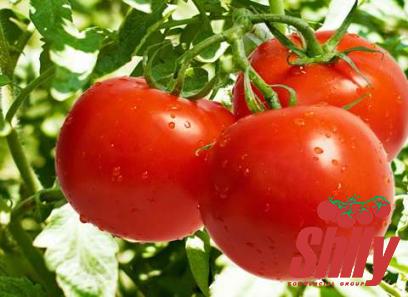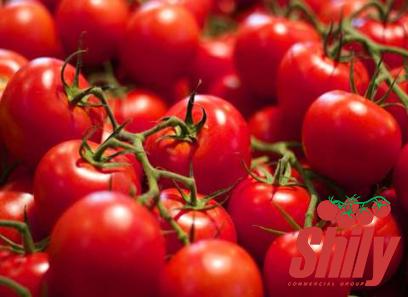Tomatoes are a staple ingredient in countless recipes around the world, adding depth, richness, and a burst of vibrant color to dishes. Among the many tomato-based products available, cooked tomato paste stands out as a versatile and essential pantry item with a concentrated flavor that can elevate the taste of any dish. In this comprehensive guide, we delve into the world of cooked tomato paste, exploring its origins, production process, culinary uses, nutritional benefits, and much more. **Understanding Cooked Tomato Paste: Origins and Production** Cooked tomato paste is made from tomatoes that have been cooked down, strained, and reduced to a thick, concentrated paste. The process of making tomato paste dates back centuries and is believed to have originated in Italy, where tomatoes were first cultivated. Today, tomato paste is produced on a large scale in modern facilities using advanced technology to ensure quality and consistency.

.
 To make cooked tomato paste, ripe tomatoes are harvested and washed to remove any dirt or debris. The tomatoes are then blanched to remove the skin before being crushed and cooked down to break down the flesh and release the natural juices. The mixture is strained to remove seeds and any remaining solids, leaving behind a smooth tomato puree. This puree is then simmered over low heat for several hours to reduce the liquid content and thicken the mixture, resulting in a rich, flavorful paste. **The Culinary Uses of Cooked Tomato Paste** Cooked tomato paste is a versatile ingredient that is used in a wide range of dishes to add depth, richness, and umami flavor. Its concentrated nature means that a little goes a long way, making it a cost-effective way to enhance the taste of soups, stews, sauces, and more. Here are some popular culinary uses of cooked tomato paste: 1. **Sauces and Stews:** Cooked tomato paste is a key ingredient in classic tomato sauce, as well as in stews such as beef stew or chili. Its intense flavor helps to build layers of taste and complexity in these dishes. 2. **Marinades and Glazes:** Tomato paste can be used to create robust marinades for meats, poultry, or vegetables. Its thick consistency allows it to cling to food and impart a rich tomato flavor when grilled or roasted.
To make cooked tomato paste, ripe tomatoes are harvested and washed to remove any dirt or debris. The tomatoes are then blanched to remove the skin before being crushed and cooked down to break down the flesh and release the natural juices. The mixture is strained to remove seeds and any remaining solids, leaving behind a smooth tomato puree. This puree is then simmered over low heat for several hours to reduce the liquid content and thicken the mixture, resulting in a rich, flavorful paste. **The Culinary Uses of Cooked Tomato Paste** Cooked tomato paste is a versatile ingredient that is used in a wide range of dishes to add depth, richness, and umami flavor. Its concentrated nature means that a little goes a long way, making it a cost-effective way to enhance the taste of soups, stews, sauces, and more. Here are some popular culinary uses of cooked tomato paste: 1. **Sauces and Stews:** Cooked tomato paste is a key ingredient in classic tomato sauce, as well as in stews such as beef stew or chili. Its intense flavor helps to build layers of taste and complexity in these dishes. 2. **Marinades and Glazes:** Tomato paste can be used to create robust marinades for meats, poultry, or vegetables. Its thick consistency allows it to cling to food and impart a rich tomato flavor when grilled or roasted.
..
 3. **Pizza and Pasta:** Tomato paste is a staple in pizza and pasta sauces, providing a concentrated tomato flavor that stands up well to other bold ingredients like cheese, herbs, and cured meats. 4. **Soups and Broths:** A spoonful of tomato paste can add depth and richness to soups and broths, enhancing the overall flavor profile of the dish. 5. **Curries and Casseroles:** Tomato paste is often used in curries and casseroles to add a tangy, slightly sweet note that balances out the richness of the dish. **Nutritional Benefits of Cooked Tomato Paste** In addition to its culinary versatility, cooked tomato paste offers a range of nutritional benefits that make it a healthy addition to your diet. Tomatoes are rich in vitamins, minerals, and antioxidants, and the process of cooking and concentrating them into paste form amplifies these health benefits.
3. **Pizza and Pasta:** Tomato paste is a staple in pizza and pasta sauces, providing a concentrated tomato flavor that stands up well to other bold ingredients like cheese, herbs, and cured meats. 4. **Soups and Broths:** A spoonful of tomato paste can add depth and richness to soups and broths, enhancing the overall flavor profile of the dish. 5. **Curries and Casseroles:** Tomato paste is often used in curries and casseroles to add a tangy, slightly sweet note that balances out the richness of the dish. **Nutritional Benefits of Cooked Tomato Paste** In addition to its culinary versatility, cooked tomato paste offers a range of nutritional benefits that make it a healthy addition to your diet. Tomatoes are rich in vitamins, minerals, and antioxidants, and the process of cooking and concentrating them into paste form amplifies these health benefits.
…
 One of the key nutrients found in tomatoes is lycopene, a powerful antioxidant that has been linked to various health benefits, including reduced risk of heart disease, certain types of cancer, and inflammation. Cooking tomatoes actually increases the bioavailability of lycopene, making cooked tomato paste an excellent source of this important nutrient. Tomatoes are also a good source of vitamin C, potassium, and folate, which play a vital role in supporting a healthy immune system, maintaining strong bones, and promoting overall health and well-being. Additionally, tomatoes are low in calories and fat, making them a nutritious addition to a balanced diet. **Choosing and Storing Cooked Tomato Paste** When selecting cooked tomato paste, it’s important to look for high-quality products that contain only tomatoes and salt, with no added sugars, preservatives, or artificial ingredients. Opt for brands that use ripe, flavorful tomatoes and follow traditional cooking methods to ensure the best taste and nutritional content. Cooked tomato paste is typically sold in cans or tubes, and once opened, should be stored in an airtight container in the refrigerator. It can also be frozen for longer storage, though the texture may change slightly upon thawing. Check the expiration date on the packaging and use the paste within a reasonable time frame to ensure freshness and taste.
One of the key nutrients found in tomatoes is lycopene, a powerful antioxidant that has been linked to various health benefits, including reduced risk of heart disease, certain types of cancer, and inflammation. Cooking tomatoes actually increases the bioavailability of lycopene, making cooked tomato paste an excellent source of this important nutrient. Tomatoes are also a good source of vitamin C, potassium, and folate, which play a vital role in supporting a healthy immune system, maintaining strong bones, and promoting overall health and well-being. Additionally, tomatoes are low in calories and fat, making them a nutritious addition to a balanced diet. **Choosing and Storing Cooked Tomato Paste** When selecting cooked tomato paste, it’s important to look for high-quality products that contain only tomatoes and salt, with no added sugars, preservatives, or artificial ingredients. Opt for brands that use ripe, flavorful tomatoes and follow traditional cooking methods to ensure the best taste and nutritional content. Cooked tomato paste is typically sold in cans or tubes, and once opened, should be stored in an airtight container in the refrigerator. It can also be frozen for longer storage, though the texture may change slightly upon thawing. Check the expiration date on the packaging and use the paste within a reasonable time frame to ensure freshness and taste.










Your comment submitted.